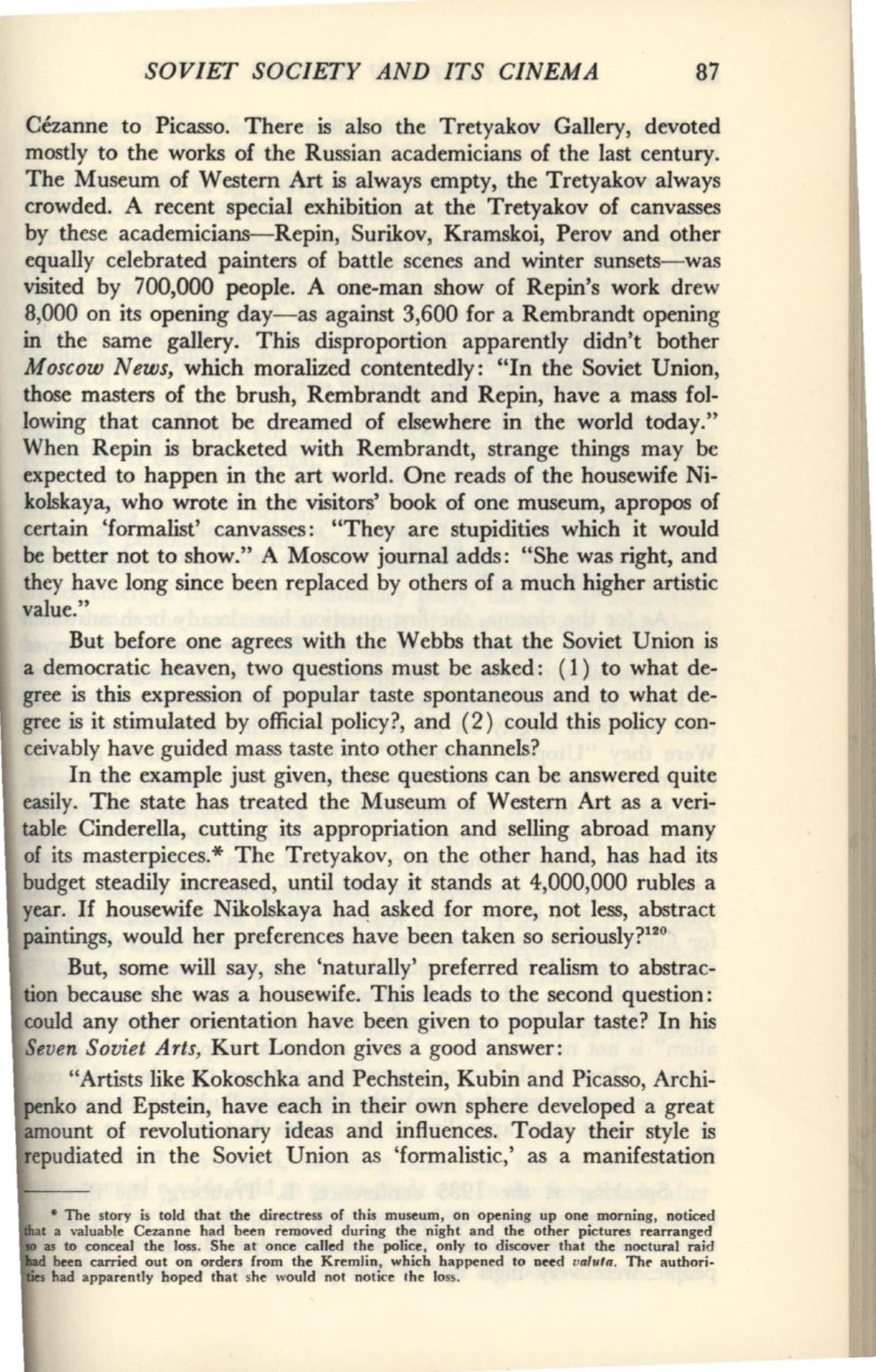
SOVIET SOCIETY AND ITS CINEMA
87
Cezanne to Picasso. There is also the Tretyakov Gallery, devoted
mostly to the works of the Russian academicians of the last century.
The Museum of Western
Art
is always empty, the Tretyakov always
crowded. A recent special exhibition at the Tretyakov of canvasses
by these academicians-Repin, Surikov, Kramskoi, Perov and either
equally celebrated painters of battle scenes and winter sunsets-was
visited by 700,000 people. A one-man show of Repin's work drew
8,000 on its opening day-as against 3,600 for a Rembrandt opening
in the same gallery. This disproportion apparently didn't bother
Moscow News,
which moralized contentedly: "In the Soviet Union,
those masters of the brush, Rembrandt and Repin, have a mass fol–
lowing that cannot be dreamed of elsewhere in the world today."
When Repin is bracketed with Rembrandt, strange things may be
expected to happen in the art world. One reads of the housewife Ni–
kolskaya, who wrote in the visitors' book of one museum, apropos of
certain 'formalist' canvasses: "They are stupidities which it would
be
better not to show." A Moscow journal adds: "She was right, and
they have long since been replaced by others of a much higher artistic
value."
But before one agrees with the Webbs that the Soviet Union is
a democratic heaven, two questions must be asked: ( 1) to what de–
gree is this expression of popular taste spontaneous and to what de–
gree is it stimulated by official policy?, and (2) could this policy con–
ceivably have guided mass taste into other channels?
In the example just given, these questions can be answered quite
easily. The state has treated the Museum of Western Art as a veri–
table Cinderella, cutting its appropriation and selling abroad many
of its masterpieces.* The Tretyakov, on the other hand, has had its
budget steadily increased, until today it stands at 4,000,000 rubles a
year.
If
housewife Nikolskaya haq asked for more, not less, abstract
paintings, would her preferences have been taken so seriously?
120
But, some will say, she 'naturally' preferred realism to abstrac–
tion because she was a housewife. This leads to the second question:
could any other orientation have been given to popular taste? In his
Seven Soviet Arts,
Kurt London gives a good answer:
"Artists like Kokoschka and Pechstein, Kubin and Picasso, Archi–
nko and Epstein, have each in their own sphere developed a great
ount of revolutionary ideas and influences. Today their style is
epudiated in the Soviet Union as 'formalistic,' as a manifestation
•
The story is told that the directress of this museum, on opening up one morning, noticed
I
a valuable Cezanne had been removed during the night and the other pictures rearranged
u
to conceal the loss. She at once called the police, only to discover that the noctural raid
been carried out on orders from the Kremlin, which happened to need
11aluln.
Th~
authori·
had apparently hoped that she would not notice the loss.


